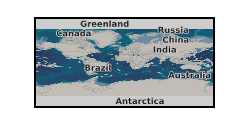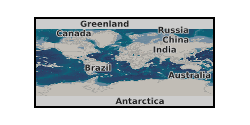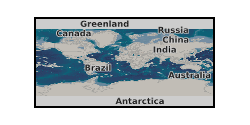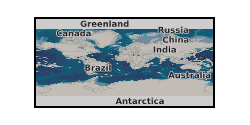Zircon
Type of resources
Available actions
Topics
Keywords
Contact for the resource
Provided by
Years
Formats
Representation types
Update frequencies
-

The project data provided herein represents the U-Pb geochemical data for a suite of magmas from Co. Donegal, Ireland. The aim of this data set is the identification of magmatic and inherited zircon grains. The samples were collected in Donegal in 2023 by Dempsey. Within the data Fan = Fanad Granite, Ard = Ardara Granite, MDG = main Donegal granite, Tull = Tullagh Granite, Thor = Thorr Granite. Crushed an separated in Glasgow by Dempsey (23-24). Prepared in Hull and Glasgow (24). Analysed in Hull Laser Ablation Facility by Dempsey (24-25). Processed by Dempsey (25) The Trace element profiles of the magmatic grains, cathode luminescence imagery and the machine learning algorithm will be included upon completion. Raw data is in the form of .xls .seq and .io files which can be opened using the Iolite data processing software. The processed data is in the form of excel spread sheets with isochrons produced using Isoplotr. The contents of rows and columns in these datasets are labelled within the .xls file. The .xls files also include the operation conditions for the laser system and mass spectrometer.
-
The files include full analytical details and datasets from the laboratories used for the acquisition of U-Pb zircon geochronology, Lu-Hf isotope geochemistry and 40Ar/39Ar analysis of detrital white mica. Also included are a list of all the published datasets used in the construction of the MDS and ridge plots for detailed regional comparisons. The data were collected in the interval January 2021 to March 2022 across a number of laboratories: Stockholm, University College London, British Geological Survey, Trinity College Dublin, Australian National University (U-Pb zircon geochronology); Open University (40Ar/39Ar analysis) and British Geological Survey (Lu-Hf isotopes). The analyses were conducted by Teal Riley (Stockholm, British Geological Survey), Ian Millar (Australian National University), Andrew Carter (University College London), Joaquin Bastias (Trinity College Dublin), Craig Storey (Open University). The analyses were conducted to examine the provenance and depositional history of the accretionary LeMay Group complex of Alexander Island.
-
Geological fieldwork was carried out in the Falkland Islands in March 2022 to help understand the depositional history and provenance of Late Permian sedimentary rocks of East Falkland. To accurately determine their depositional age and precise provenance we conducted a detailed analysis of zircon geochronology and geochemistry. The files provided here include full analytical details and datasets from the laboratories used for the acquisition of U-Pb zircon geochronology and Lu-Hf isotope geochemistry. The data were collected in the interval November 2023 to July 2024 across a number of laboratories: University College London and Australian National University (U-Pb zircon geochronology); British Geological Survey (Lu-Hf isotopes). The analyses were conducted by Ian Millar (Canberra, British Geological Survey) and Andrew Carter (University College London). The analyses were conducted to examine the provenance and depositional history of the sedimentary successions of the Falkland Islands. Funding: This work was supported by NERC National Capability funding (Polar Expertise Supporting UK Research).
-
Geological fieldwork was carried out in the Hudson Mountains during the 2005/6 and 2019/20 Antarctic summers to help understand the glacial history of the Pine Island Glacier region of West Antarctica. To accurately determine the crystallisation age of a suite of granitoid glacial erratics, we conducted a detailed analysis of zircon U-Pb geochronology. The dataset here provides U-Pb zircon geochronology data for 10 rock samples, collected from the Hudson Mountains. The data were collected in November 2024 at University College London. The analyses were conducted by Andrew Carter (University College London). This work was funded by NERC grant (NE/S006710/1) to Joanne Johnson.
-

Detrital zircon age data, details of Expedition 362 samples . For more information see published report, https://doi.org/10.1016/j.epsl.2017.07.019 IODP Sites U1480–U1481, located on the Indian oceanic plate, east of the NinetyEast Ridge and west of the north Sumatran subduction margin Site U1480 ~ 3°2.0447'N 91°36.3481'E 4147.5 Site U1481 ~ 2°45.261'N 91°45.5771'E
-

Provided here are in-situ Si and O isotope compositions of Detrital Jack Hills and Lachlan Fold Belt zircons. These data formed the basis of the research published as: Origin and significance of Si and O isotope heterogeneities in Phanerozoic, Archean, and Hadean zircon, Trail et al., (2018), PNAS 115 (41), 10287-10292 The data are provided in a single Excel spreadsheet, with multiple tabs, which are as follows: 1. Sample description and analytical method summaries 2. Solution and laser-fluorination data for characterisation of the standards used in the Ion Probe measurement sessions 3. Ion Probe (In-situ) Si and O isotope data for the Lachlan Fold Belt and Duluth Gabbro zircons 4. Ion Probe (In-situ) Si and O isotope data for the detrital Jack Hills zircons, as well as 207Pb/206Pb age estimates 5. Raw Ion Probe Si and O isotope data for LFB samples 6. Raw Ion Probe Si and O isotope data for Jack Hills samples 7. Ion Probe (In-situ) Si isotope data for the Lachlan Fold Belt zircons (utilising O- hyperion source)
-

Nanoscopic (50 < size < 150 nm) magnetic particles embedded within the unaltered interior of mineral crystals like zircons (ZrSiO 4 ) make ideal candidates to record the information about the earth's magnetic field (geodynamo). Information regarding the magnitude of the field can be obtained by measuring the natural remnant magnetization (NRM) of these carriers and further information on the approximate size range of the carriers can be obtained by carrying out thermal remnant magnetization measurements (TRM). However very little is known about the actual morphology and spatial distribution of these carriers in order to understand the fundamental parameters influencing paleomagnetic recording. We propose to image pristine zircons crystals with simple geological histories containing large remnant magnetization using ptychotomography in order to investigate the size, shape and spatial distribution of nano-paleomagnetic carriers. This would also give us an opportunity to fine tune the ptychotomographic setup at I13-coherence branch. This data package consists of 3D maps of Bishop Tuff Zircons, relatively young. The folders contain a stack of .tiff files which can be loaded into imagej, dragonfly, aviso for segmentation purposes.
-

Zircon U-Pb isotope data are presented for eight plutonic rocks from the Masirah ophiolite and one plutonic rock from the Ra's Madrakah ophiolite (south east Oman). These data constrain the age of formation of the two ophiolite nappes exposed on Masirah Island (early Cretaceous), whereas two intrusions with younger ages (late Cretaceous) overlap with the proposed emplacement age of the ophiolite. The data cover two sites in the Masirah Lower Nappe, two sites in the Masirah Upper Nappe (on Masirah Island, off the SE coast of Oman) and one site on Ra's Madrakah (on the mainland of Oman). The interpretation and discussion of these data form part of a manuscript submitted to Geochemistry, Geophysics, Geosystems. Data collection was done using chemical abrasion isotope dilution thermal ionisation mass spectrometry (CA-ID-TIMS) at the NERC Isotope Geosciences Laboratories at the British geological Survey, supported by NERC Isotope Geosciences Facilities award IP-1919-0619. This work resulted from a PhD project funded by NERC GW4+ DTP grant NE/L002434/1.
-

Petrographic, whole-rock, quartz and zircon geochemistry, zircon Lu-Hf isotopes, molybdenite Re-Os geochronology and zircon U-Pb CA-ID-TIMS data from the Yerington Batholith, Nevada, USA. This data set comprises 10 .xlsx files collected during 2017-2022, as summarised below. They are each numbered as per their place as Supplementary Data within L. C. Carter’s PhD thesis “Exsolution depth and migration pathways of mineralising fluids in porphyry deposit-forming magmatic systems” (Camborne School of Mines, University of Exeter). 3.1_QEMSCAN data – QEMSCAN automated mineralogical assessment of a thin section made from drill core from the Ann Mason porphyry deposit, containing quartz unidirectional solidification textures (USTs) interlaid with aplite, hosted within an aplite dyke that cross-cuts a porphyry dyke. Analysed at Camborne School of Mines. 3.2 EPMA data – trace elements (Ti, Fe, Al) of quartz USTs, measured by EPMA spot analysis at Camborne School of Mines. 4.1 EPMA and IBA analyses – trace elements of quartz in miarolitic cavities and aplite dykes, measured by EPMA spot analysis at Camborne School of Mines and Total-IBA at UKNIBC, University of Surrey. Also includes Total-IBA map of titanium in quartz in a miarolitic cavity hosted in an aplite dyke. 4.2 QEMCAN data - QEMSCAN automated mineralogical assessment of a thin section of a mineralised miarolitic cavity hosted within an aplite dyke which cross-cuts the Luhr Hill granite. Analysed at Camborne School of Mines. 5.1 Full sample list – Full sample list for the following data sets. 5.2 Geochronology data – Zircon U-Pb CA-ID-TIMS geochronology data from across the Yerington batholith, analysed at NIGL, BGS. Molybdenite Re-Os geochronology data from the Ann Mason porphyry deposit, analysed at Durham University. 5.3 QEMCAN data - QEMSCAN automated mineralogical assessments of thin sections of a miarolitic cavities hosted within aplite dykes. Analysed at Camborne School of Mines. 5.4 Whole rock geochem data – Whole rock major (XRF) and trace element (ICP-MS) geochemistry data, analysed at University of Leicester. 5.5 Zircon LA-ICP-MS data – analysed at Natural History Museum, London 5.6 Zircon Lu-Hf isotope data – analysed at NIGL, BGS. Together, these files form the supplementary data files for L.C. Carter’s PhD thesis “Exsolution depth and migration pathways of mineralising fluids in porphyry deposit-forming magmatic systems” (Camborne School of Mines, University of Exeter). Please refer to the thesis for further details. These data are previously published as Carter et al. (2021, Communications Earth & Environment), Carter and Williamson (2022, Ore Geology Reviews) and Carter et al. (2022, Scientific Reports).
-

Isotope analysis data. Project details: The continental crust is our only archive of Earth history; not just of the crust itself but of the hydrosphere, atmosphere and biosphere, and of the deep Earth through its interactions with the crust. This archive, like the rock record itself, is incomplete and much effort is focused on interrogating the crust to gain a clearer and more complete picture of Earth history. The continental rock record is episodic with, for example, ages of igneous crystallization, metamorphism, continental margins, and seawater and atmospheric proxies distributed about a series of peaks and troughs that in part correspond with the cycle of supercontinent assembly and dispersal. At the core of the debate is what these well-established peaks of ages in the geological record represent and how they develop. The peaks of ages correspond with periods of global assembly of continents to form supercontinents. The project will address whether the peaks of ages are primary features associated with supercontinent assembly or break up, or they are they secondary features representing greater preservation potential at the times of supercontinent assembly. Our work will focus on the Rodinian supercontinent cycle, which extends from initiation of convergent plate interaction around 1.7 Ga, to continental collision at 1.1-1.0 Ga during the Grenville orogeny, to final breakup of the supercontinent by 0.54 Ga. Detrital zircons from sedimentary units throughout the supercontinent cycle provide a record of the magmatic activity for which the igneous rocks are often no longer preserved. We will determine (i) the ages ranges of magmatic activity preserved in the sedimentary rocks in the 600 Ma pre-collision phase, and (ii) how and when the distinctive Grenville peak of ages developed by comparing the zircon record from samples pre-, syn- and post- Rodinian supercontinent assembly with estimated volumes of magma and numbers of zircons produced during the same interval. This will differentiate primary generation processes from secondary processes, constraining when the dominant age peak developed, the tectonic processes that operated, and hence the method by which it developed. The wider implications of when the continental crust formed are considerable. Studies of continental growth continue to uncritically assume that the geological and isotopic record provide insight into processes of crust formation. Until it can be established whether the record is the outcome of generational or preservational processes, or a combination of both, then drawing conclusions on this fundamental question in the Earth Sciences are premature. If the record is a preservational record then this impacts on understanding continental growth through time and on secondary questions of how the crustal record is used to unravel the temporal evolution of the hydrosphere and biosphere, and the distribution of mineral deposits.
 NERC Data Catalogue Service
NERC Data Catalogue Service